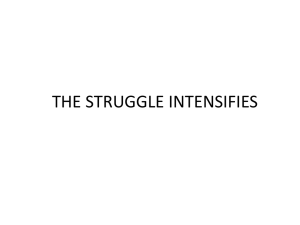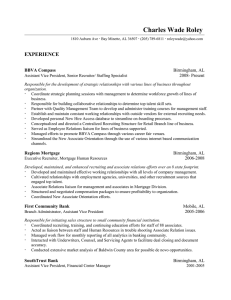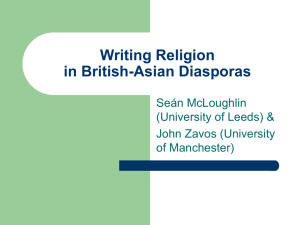Major Events of the Civil Rights Movement in the Early 1960s
advertisement
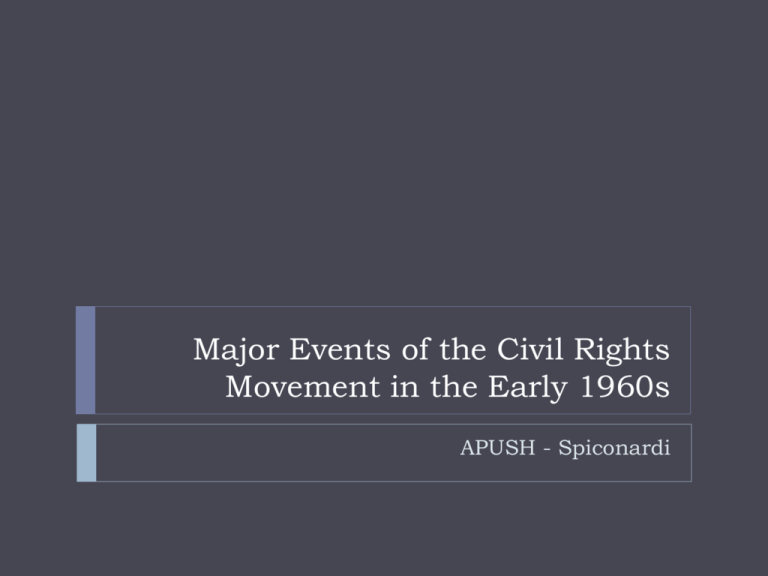
Major Events of the Civil Rights Movement in the Early 1960s APUSH - Spiconardi Do Now Recalling the video clip, The Century: America’s Time – Happy Days What were the major civil rights event in the 1950s? Brown v. Board of Education of Topeka, KS Little Rock Nine Rosa Parks Montgomery Bus Boycott Massive Resistance In 1956, 82 out of 106 southern congressmen and every senator except Lyndon B. Johnson, Albert Gore and Estes Kefauver signed a Southern Manifesto Denounced the Brown decision Accused the Supreme Court of a “clear abuse of judicial power” Massive Resistance Sen. Harry F. Byrd (D-VA) called for resistance to forced integration; slowdown integration by passing laws Example: Closed public schools that integrated and offered funds to white students to attend private schools Greensboro, NC and Sit-ins Greensboro prided itself in being the first city in the South to declare its willingness to abide by the Brown v. Board of Ed. decision However, by 1960, most schools were still segregated and public spaces were still segregated Upset with the slow pace of change, students sit at the counter of the local Woolworth’s, which was reserved for whites. Students did this every day for 5 months until they were served Greensboro, NC and Sit-ins The civil disobedience sparked sit-ins in other parts of the South Often resulted in… Birmingham, AL Birmingham may have been the most segregated and violent city in the South Over 50 bombings of black homes and institutions since WWII Blacks demonstrated for greater economic opportunities and the desegregation of local businesses Leaders invite Martin Luther King to come to Birmingham King is arrested during demonstrations Letter from a Birmingham Jail King writes a letter from prison in response to local clergy who were calling for patience “Perhaps it is easy for those who have never felt the stinging dark of segregation to say, ‘Wait.’ But when you have seen vicious mobs lynch your mothers and fathers at will and drown your sisters and brothers at whim;…when you see the vast majority of your twenty million Negro brothers smothering in an airtight cage of poverty in the midst of an affluent society; when you suddenly find your tongue twisted…as you seek to explain to your six-year-old daughter why she can’t go to the public amusement park…and see the tears welling up in her eyes when she is told Funtown is closed to colored children…then you will understand why we find it difficult to wait.” Birmingham, AL After his release from prison, King calls on students to demonstrate Birmingham officials responds with force Television captures the images of attack dogs, fire hoses, and excessive force Many Americans and JFK come to endorse the goals of the Civil Rights Movement Kennedy realized he could not call the U.S. the beacon of freedom while practicing racial inequality within its own borders Kennedy calls on Congress to pass civil rights legislation Civil Rights Address on June 11, 1963 Birmingham, AL Segregationist continue the violence in Birmingham Bomb explodes at a Baptist church in September 1963 killing four girls “Jobs and Freedom”: The March on Washington The March on Washington (August 28, 1963) 250,000 black and white Americans gather to show support for civil rights legislation Goals Public-works program to reduce unemployment Increase in minimum wage Law protecting against employment discrimination While reflecting cooperation between whites and blacks… Women did not speak at the event SNCC leader John Lewis’ speech was edited by organizers “I Have a Dream” Interestingly, the original speech did not have “I have a dream” incorporated into it
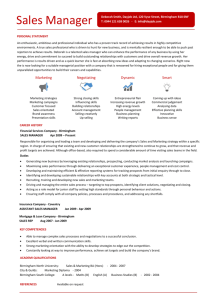
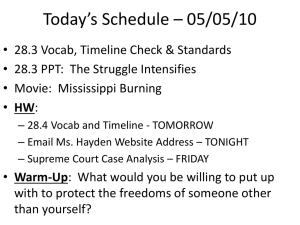
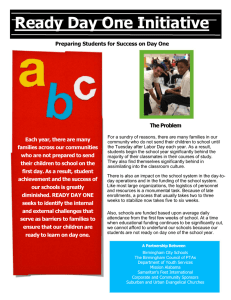
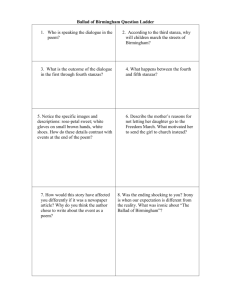
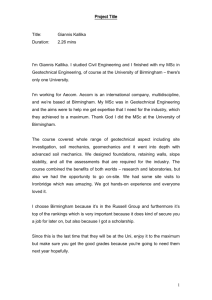
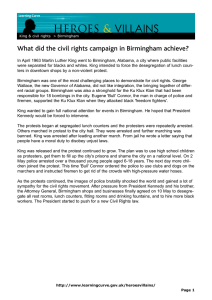
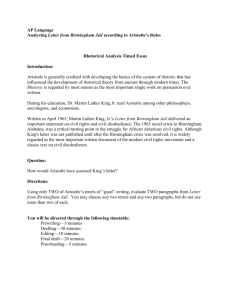
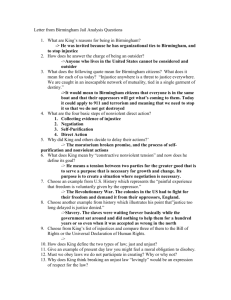
![Project description [Word]](http://s3.studylib.net/store/data/008043425_1-3e4ed50c123e3e03f00b9fc84ce61bee-300x300.png)
